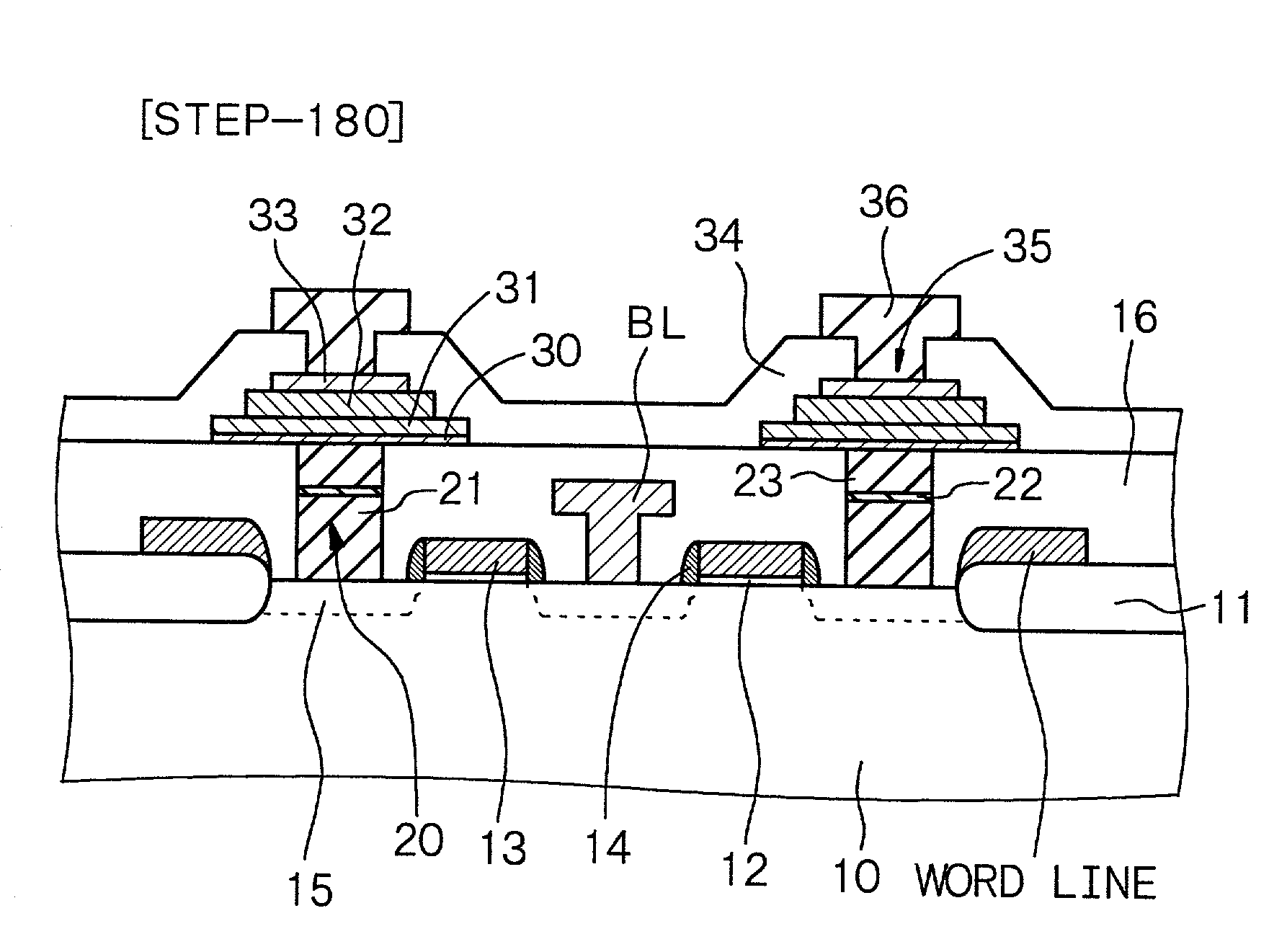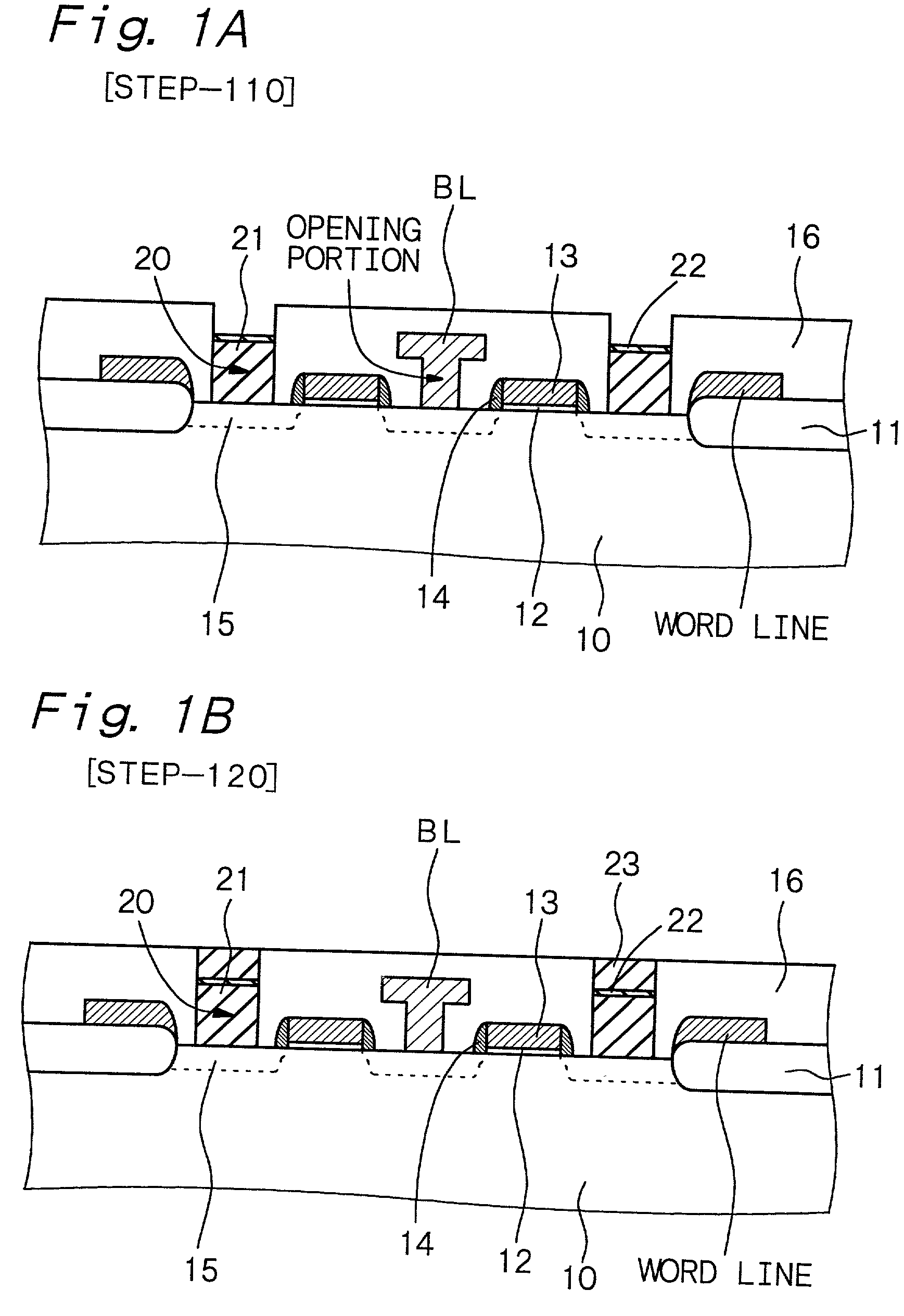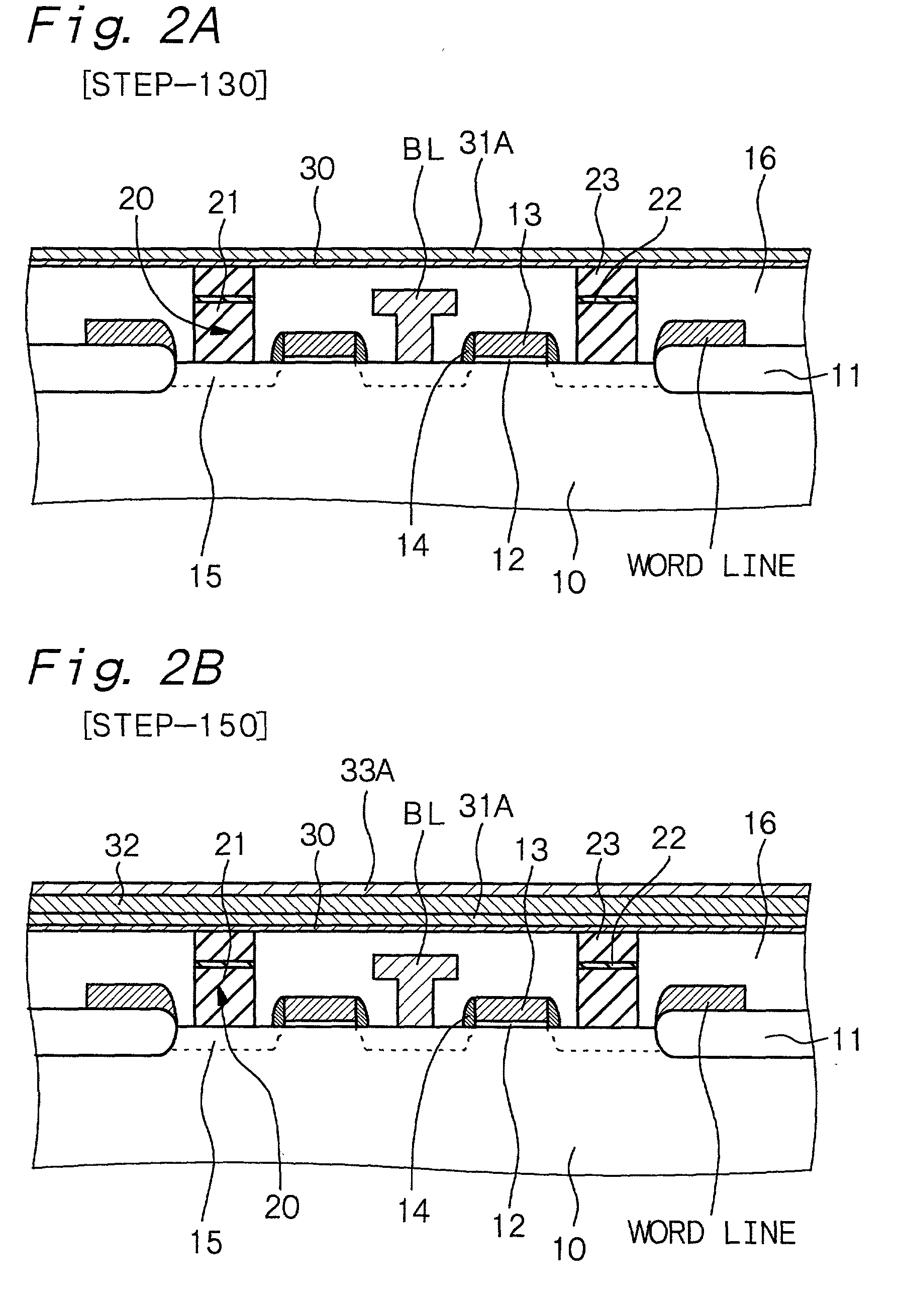Semiconductor memory device
a memory device and semiconductor technology, applied in semiconductor devices, digital storage, instruments, etc., can solve the problems of reducing the area of the capacitor member, affecting the accumulative charge amount, and unable to secure the capacitance required for storing data, so as to prevent the peeling of the lower electrode.
- Summary
- Abstract
- Description
- Claims
- Application Information
AI Technical Summary
Benefits of technology
Problems solved by technology
Method used
Image
Examples
example 2
[0103] Example 2 is concerned with a variant of the semiconductor memory device of Example 1. In the nonvolatile memory of Example 2, the lower electrode has a so-called damascene structure.
[0104] The damascene structure generally refers to a wiring structure formed by a method in which a recess corresponding to a wiring pattern is formed in an insulating layer, a wiring material layer is formed in the recess and on the insulating layer, and a wiring material layer on the insulating layer is removed by a CMP method so that a wiring material layer is embedded in the recess. In existing technologies of manufacturing semiconductor devices, improvements are being made in microfabrication and are making it difficult to form a wiring by a combination of conventional lithography and dry etching techniques alone, so that the damascene structure is, among technologies, attracting attention as a leading method of forming a wiring. In particular, when a noble metal material that has low reacti...
PUM
 Login to View More
Login to View More Abstract
Description
Claims
Application Information
 Login to View More
Login to View More - R&D
- Intellectual Property
- Life Sciences
- Materials
- Tech Scout
- Unparalleled Data Quality
- Higher Quality Content
- 60% Fewer Hallucinations
Browse by: Latest US Patents, China's latest patents, Technical Efficacy Thesaurus, Application Domain, Technology Topic, Popular Technical Reports.
© 2025 PatSnap. All rights reserved.Legal|Privacy policy|Modern Slavery Act Transparency Statement|Sitemap|About US| Contact US: help@patsnap.com



